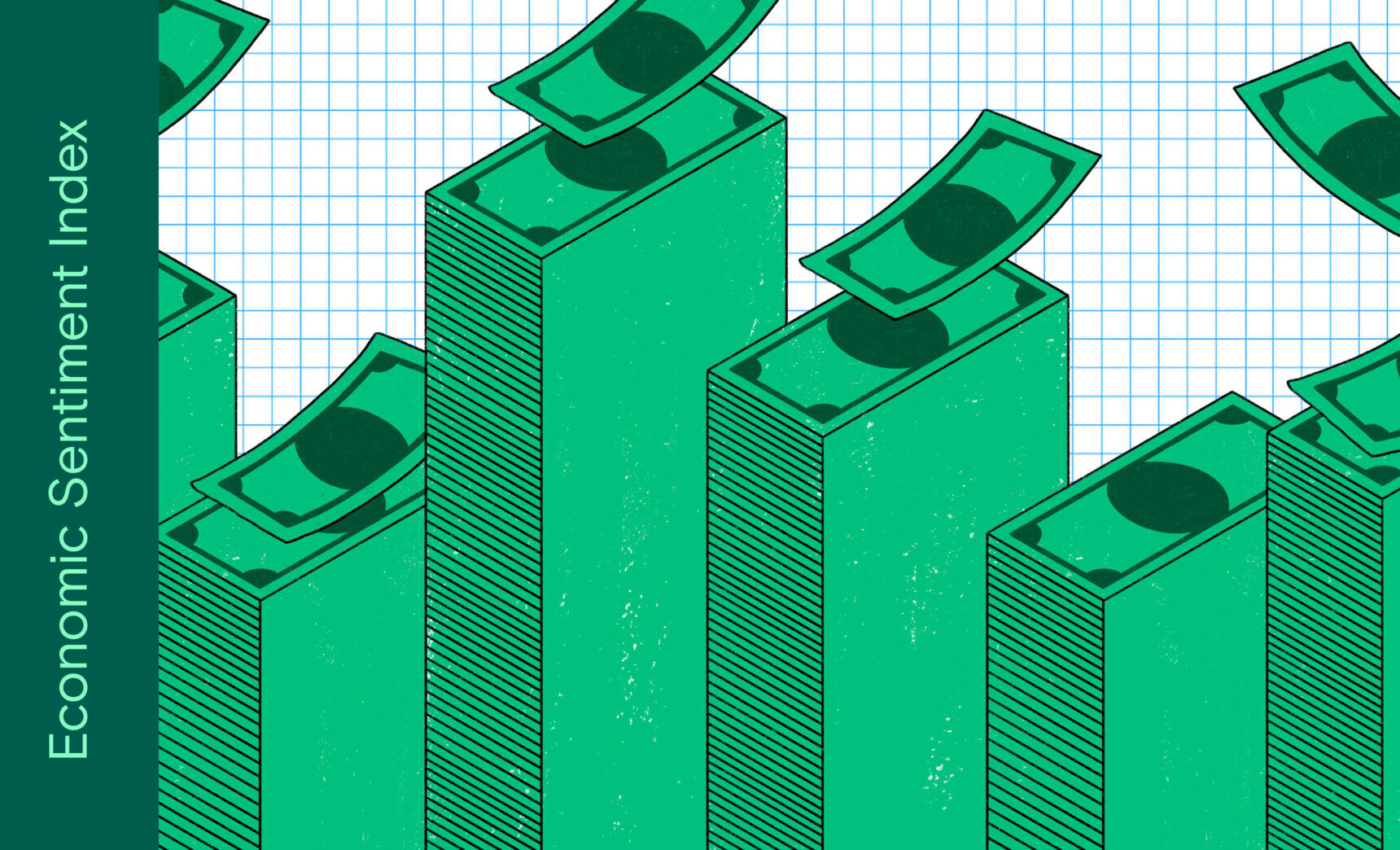
The latest biweekly reading of the Penta-CivicScience Economic Sentiment Index (ESI) declined slightly by 0.1 points from 33.8 to 33.7, marking a minor dip in overall confidence over the past two weeks.
Two of the ESI's five indicators decreased during this period. Confidence in the overall U.S. economy decreased the most, falling 1.0 points to 34.1.
—Confidence in personal finances decreased 0.7 points to 51.5.
—Confidence in buying a new home increased 0.4 points to 26.1.
—Confidence in making a major purchase increased 0.5 points to 26.0.
—Confidence in finding a new job increased 0.7 points to 31.0.
The May Consumer Price Index showed that inflation rose 0.1 percent during the month, cooling slightly after rising 0.2 percent in April. Year-over-year inflation increased 2.4 percent. The Bureau of Labor Statistics (BLS) stated that shelter was "the primary factor in the all items monthly increase," rising 0.3 percent in May. Meanwhile, energy declined 1.0 percent during the month, primarily driven by declining gas prices. Separately, BLS told economists that staffing shortages forced the agency to rely more heavily on less precise price estimation methods for April's data. The Wall Street Journal reported that these staffing shortages have led economists to question the "quality of recent and coming inflation reports."
The May Jobs Report showed that the economy added 139,000 jobs last month, while the unemployment rate remained unchanged at 4.2 percent. While the jobs data reflects a slowdown in hiring from April—where the economy added a revised 147,000 jobs—these gains were higher than the 125,000 jobs predicted by analysts polled by the Wall Street Journal. However, the employment-to-population ratio fell to 59.7 percent, its lowest point since January 2022. BLS attributes May job growth to gains in health care, leisure and hospitality, and social assistance.
President Donald Trump doubled tariffs on aluminum and steel on June 3, increasing the levy from 25 percent to 50 percent. The President stated in an executive order that "the increased tariffs will more effectively counter foreign countries that continue to offload low-priced, excess steel and aluminum in the United States market and thereby undercut the competitiveness of the United States steel and aluminum industries."
New data from the Bureau of Economic Analysis showed that the U.S. trade deficit declined in April to $61.6 billion. Bloomberg reported that this marks the trade deficit's lowest level since 2023 and represents a 55 percent decline from March, where the deficit hit $138.3 billion ahead of President Trump's "Liberation Day." An analysis from the Congressional Budget Office (CBO) found that new U.S. tariffs announced prior to May 13 would reduce the deficit by $2.8 trillion after adjusting for their tariffs' negative impact on growth. CBO also finds that the tariffs would increase inflation by 0.4 percentage points in 2025 and 2026.
On June 10, the World Bank slashed U.S. growth projections in half for 2025, projecting an expansion of just 1.4 percent, a substantial decline from the 2.8 percent growth that the U.S. economy experienced in 2024. The World Bank warned that if the 90-day pause of the "Liberation Day" tariffs expires on July 31 and the "reciprocal" tariffs come into effect, that it would result in "global trade seizing up in the second half of this year" and that it would be "accompanied by a widespread collapse in confidence, surging uncertainty, and turmoil in financial markets."
The ESI's three-day moving average began the two-week stretch at 33.6 on June 4 and then climbed to a high of 35.6 on June 7. It then fell to 32.8 on June 10 before briefly climbing up to 34.5 on June 12. The three-day moving average then fell again, hitting a low of 31.9 on June 16 before rising to 32.7 on June 17 to close out the session.
The next release of the ESI will be on Wednesday, July 2, 2025.